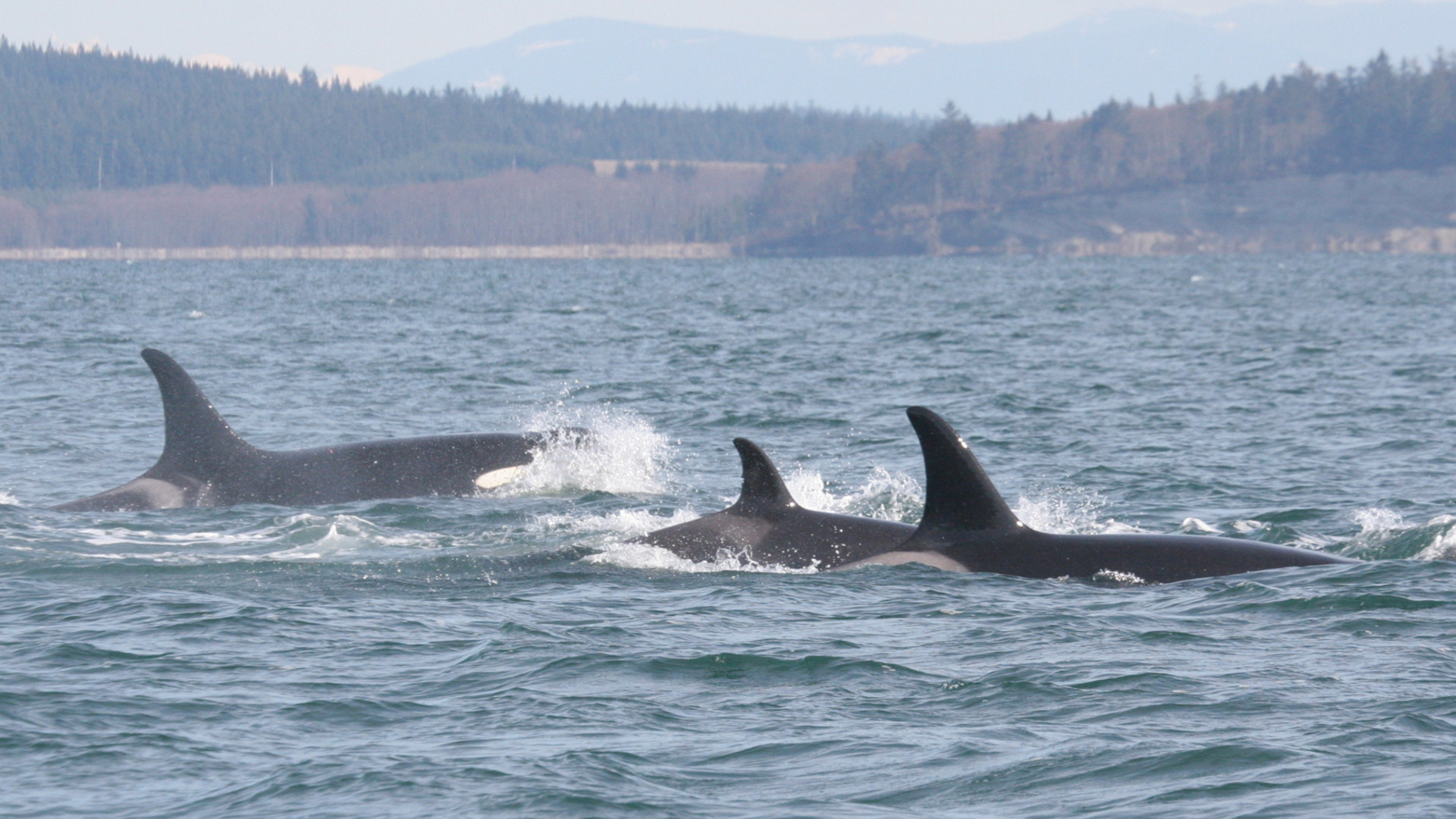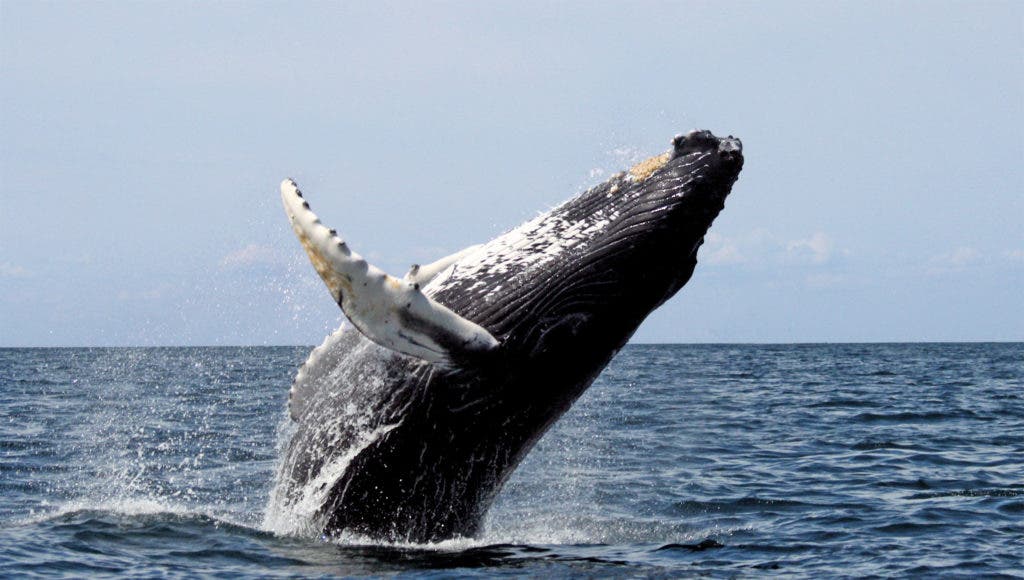Humpbacks, Transient Biggs, and Krill
Looking at our maps, there is a definite area that the Humpback Whales are favouring. The area where there are minimal to no sightings are where the commercial draggers have been running. What do the draggers drag for? They are taking krill and shrimp and everything else in their path. Krill is now being used primarily for the vitamin market and shipping to other countries. Krill is one of the base foods for our ocean animals and fish such as Herring, Sockeye and Chinook, also known as Spring or King Salmon, plus many other species in addition to our Baleen Whales such as Humpback, Minke, Fin and Blue Whales. At the bottom of the food chain, taking of many hundreds of tons of Krill can have reprocussions throughout.
Transient Bigg’s Orca, as meat eaters, are following the sea lions, Pacific White Sided Dolphins and Porpoise who feed on the fish, who feed on the Krill as well as other fish that eat Krill. Our oceans have a balance, that we humans have been known to mess with. Hopefully we have been learning from our mistakes.
To learn more about the Cetacean species, Marine Mammal Rescues and Response and interactions with their food, and ours, be sure you check out our World of Whales 2018. event in November. The link can also be found in our Society News section. We hope to see you there.
Keep your eyes open, report your sightings to us, and use caution on the water giving these animals plenty of room. Remember N.E.W.S. when you see a whale, meaning put your boat in NEUTRAL, ENJOY the view, WAIT till the whales are at a fair distance, and then SLOWLY leave the scene.
WORLD OF WHALES 2018: Two incredible days of multimedia whale and marine mammal presentations and workshops.
Friday, November 16, 2018 offers Two FREE presentation sessions and Saturday, November 17, 2018
is a full day of workshops including lunch. At the Evergreen Theater, Powell River, BC.
For details and workshops registration, please go to World of Whales.
We appreciate and thank you for your kind donations. Donations Page
Our Cetacean Web Camera YouTube Channel is live. We’re continueing to work on resolving transmission problems causing the intermittent bouncy images from the Beach Gardens Marina camera. Our second (backup) live stream mounted in Powell River appears when the Beach Gardens camera is down. We appreciate your patience.
Thank You to our Volunteers and Contributors!
Our team of online Volunteers continue to do a great job in making sure all your sightings reports are mapped and published regularly. Would you like to join us?
Review our current Volunteer Job Postings
Archive Explorer navigates 10,000+ Cetacean Sightings, images, videos and audio recordings.
*Recommended for desktop browsers and newer mobile devices
Archive Explorer dives into the Coastal Cetacean world. View Cetacean sighting locations, photos and videos:
- All species including Orca, Humpback, Grey Whale or Dalls Porpoise
- Follow the endangered Southern Residents Orca in the Salish Sea
- Search for encounters with T002C2 Tumbo
- Witness a close-up Orca encounter video in Port Alberni harbour
- Follow the T010s Transients as they hunt and travel the inside passage
- Track “KC”, the ever popular Humphack’s movements this past August
- Locate any of 12,000 named locations on the BC and WA State coast
- Print custom sighting reports and maps (Coming Soon)
Archive Explorer Help Page explains many advanced functions
Send your Comments and Questions to: Archive Explorer Feedback
Sightings Open Data includes all sightings data, photos and videos, in a table you can filter and download.
Admittedly, not everyone loves these furry machines that need a quarter of their body per day to keep warm, even with their luxurious coats. They consume over a hundred different species of primarily bottom dwelling invertebrates, but come into conflict with fishermen over the sea cucumbers, urchins, clams, abalone etc that have a fairly high market value.
When the otters move into a region they do have an impact on those fisheries, but what they give back to the environment makes them worth their weight in gold – their foraging habits quickly restore kelp beds where juvenile salmon hide on the journey to the open ocean. Each female Chinook salmon that successfully returns to spawn carries as many as 17,000 eggs, so each fish saved by adequate kelp beds can have a significant impact….
read on
"We are united in our efforts to save our orca population, and we are going to be active in that regard, and we are glad British Columbia will be an ally in that effort," Inslee told reporters at a conference in Vancouver on developing the Cascadia region that includes both B.C. and Washington.
Horgan said their next stop is a meeting with Fisheries Minister Jonathan Wilkinson, who has jurisdiction over tidal waters, salmon and ocean fishing in Canada. Horgan and Inslee pledged to continue work on inland areas, including logging protection for the Skagit River and the Columbia, which lost most of its salmon runs due to hydro dams on the U.S. side of the border….
read on
They came in from the Pacific overnight, appearing in Haro Strait along San Juan Island. We fervently hope they’re finding the food they need and can eat – mainly Chinook salmon – but we know not many salmon are in the Salish Sea this year….
read on
MacDuffee touched on problems plaguing their staple food – Chinook salmon – repercussions of environmental pollutants, and noise in the Salish Sea. More than anything, especially in conjunction with the Court of Appeal’s ruling to delay construction, she detailed why we all have reason to save the Salish Sea and protect the marine inhabitants we share it with.
Building off of the incredible energy in the room, MacDuffee dove straight in and outlined a number of issues, all of which equally plague the SRKW population. The first topic of the evening was the status of wild salmon populations.
"Chinook stocks are not at the levels that they once were," she said, speaking of the the species’ almost exclusive choice of food.
MacDuffee pointed to hatcheries as having an adverse effect on salmon.
[The pipeline’s] path would cross more than 200 streams and rivers, many of which serve as crucial spawning environments for salmon.
"In the past, we always thought . . . the ocean had an unending, unlimited ability to feed and support salmon. But we know now that that is not the case. There are limits to the number of salmon that can be supported in the North Pacific.
"When we put so many hundreds of millions, if not billions, of hatchery salmon into the North Pacific, there’s only going to be so many salmon that are supported," she said. "And that comes at a cost to those wild salmon populations."…
read on
read on
"While we were over the chain of seamounts, the ship was visited by large numbers of humpback and long-finned pilot whales," said Dr. Eric Woehler from BirdLife Tasmania, who was on the Investigator with a team surveying seabirds and marine mammals.
"We estimated that at least 28 individual humpback whales visited us on one day, followed by a pod of 60-80 long-finned pilot whales the next.
"We also saw large numbers of seabirds in the area including four species of albatross and four species of petrel."…
read on
Two recent papers by Florida Atlantic University researchers reveal how cetaceans compete for survival in an evolutionary “arms race” with changing pathogen communities. As pathogenic threats and the risk of infectious disease changes, whales and dolphins must adapt to those changes. The question today is can they adapt fast enough?…
read on







